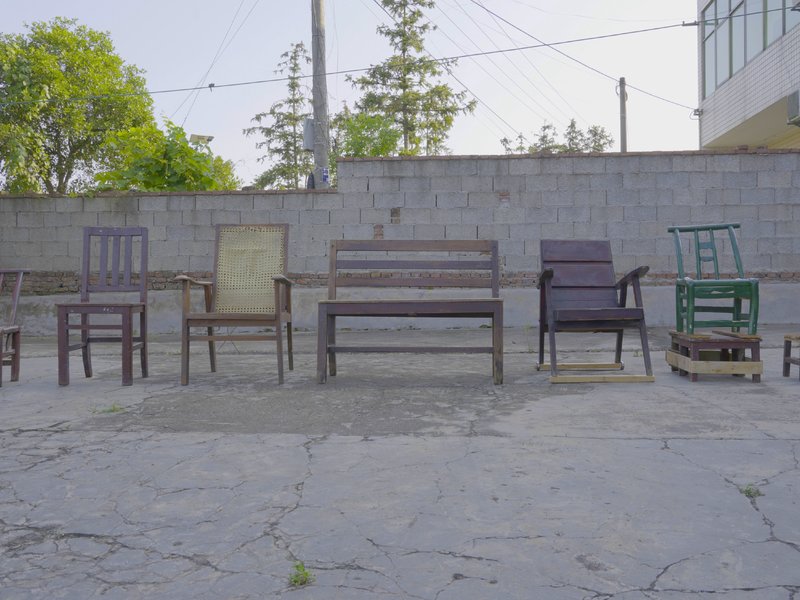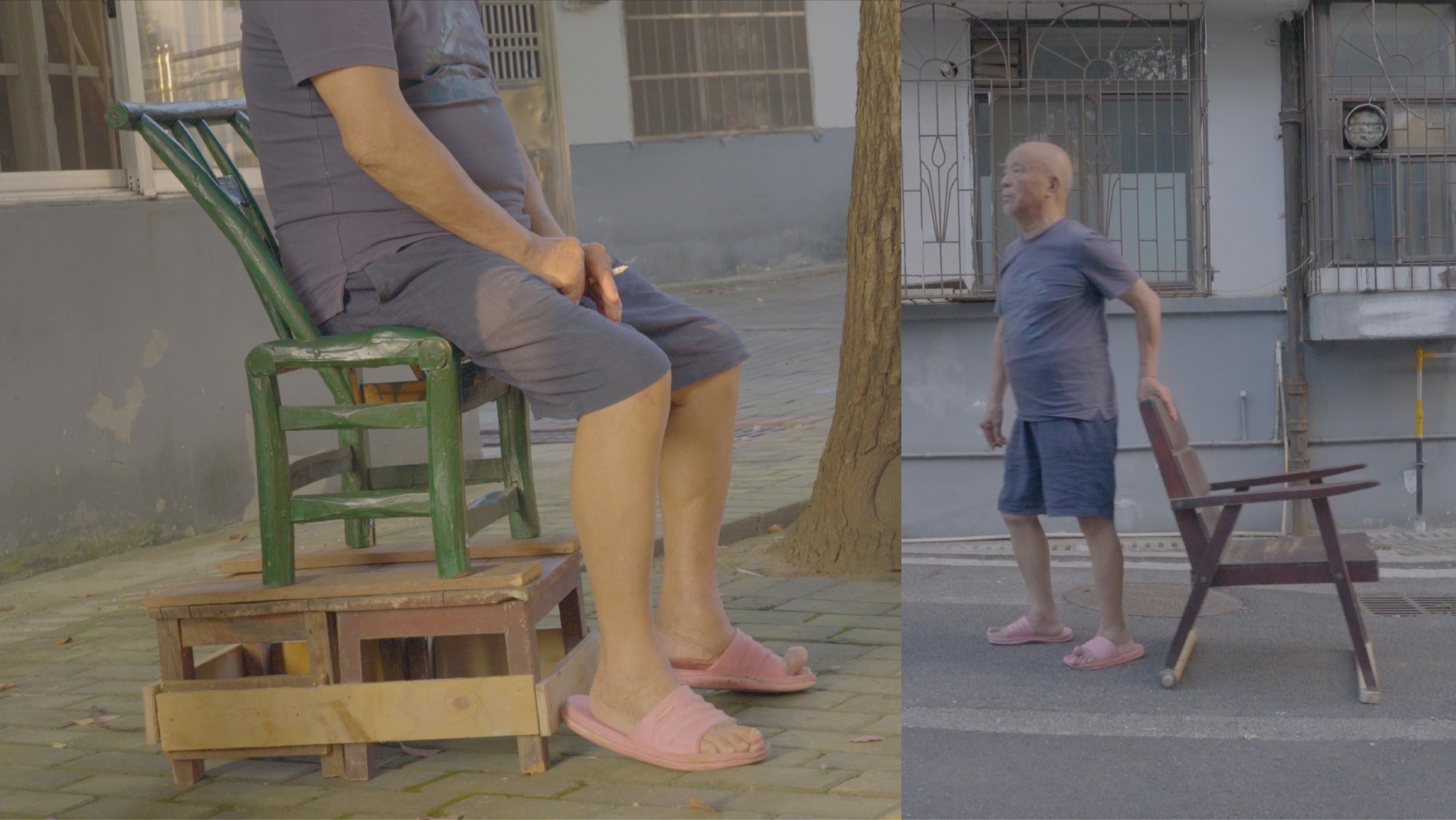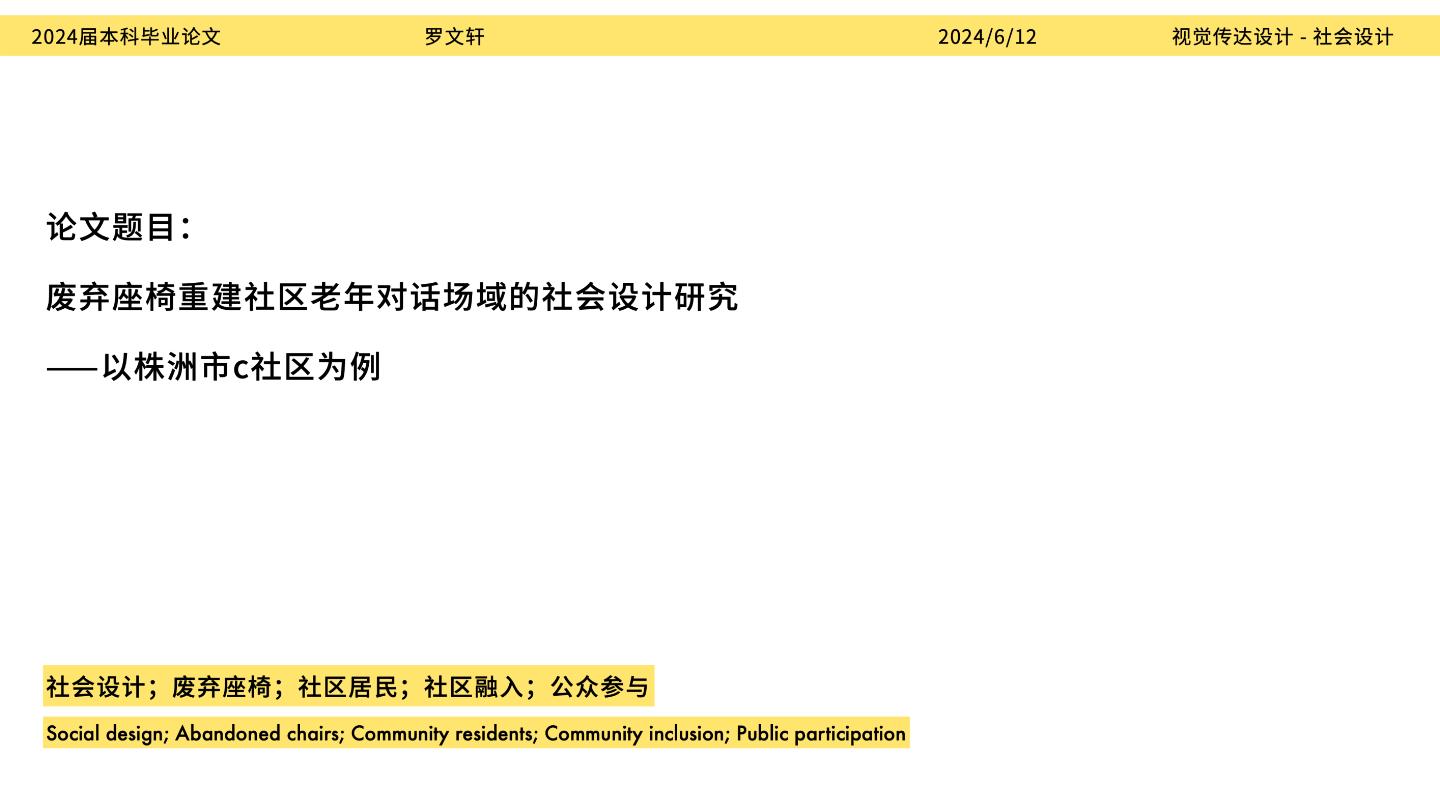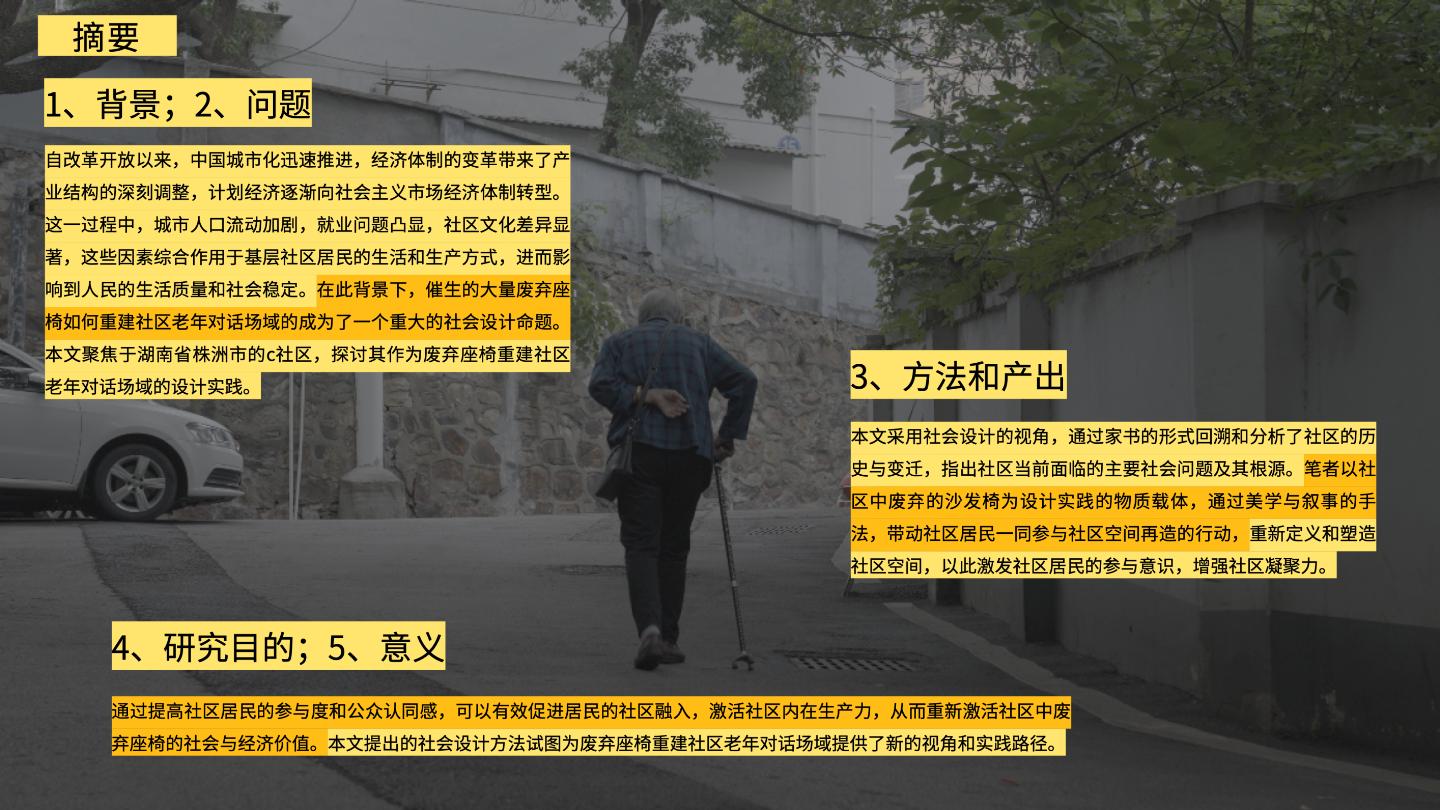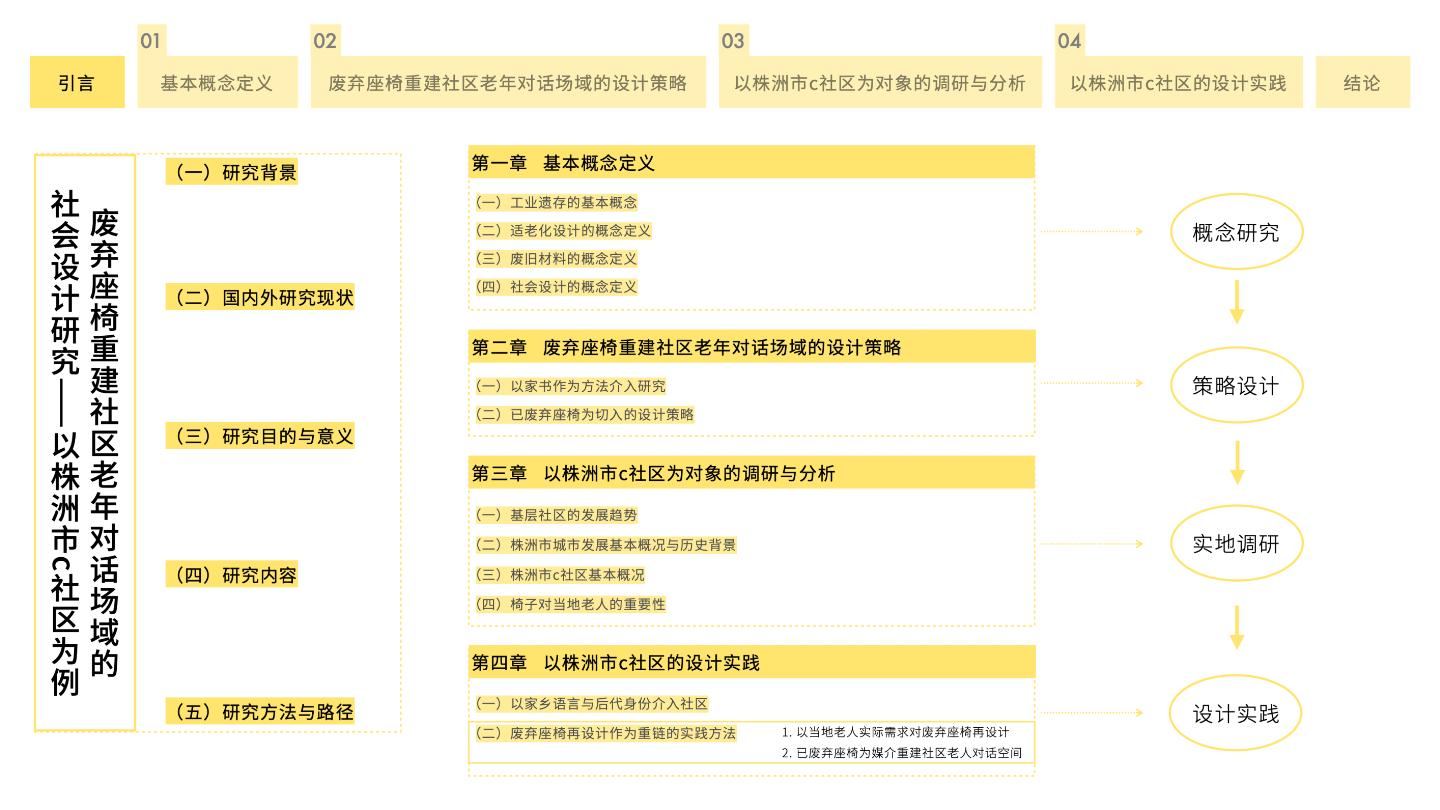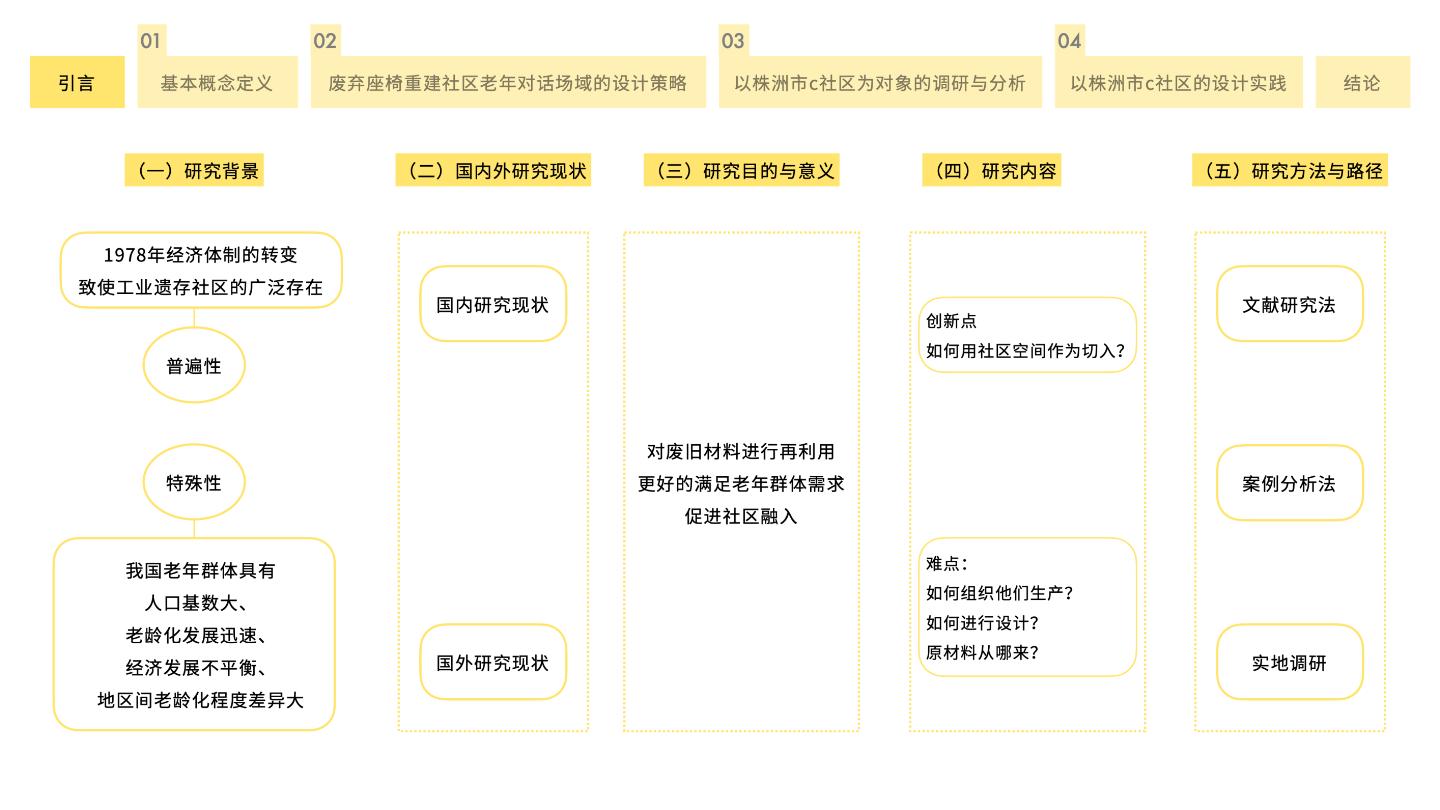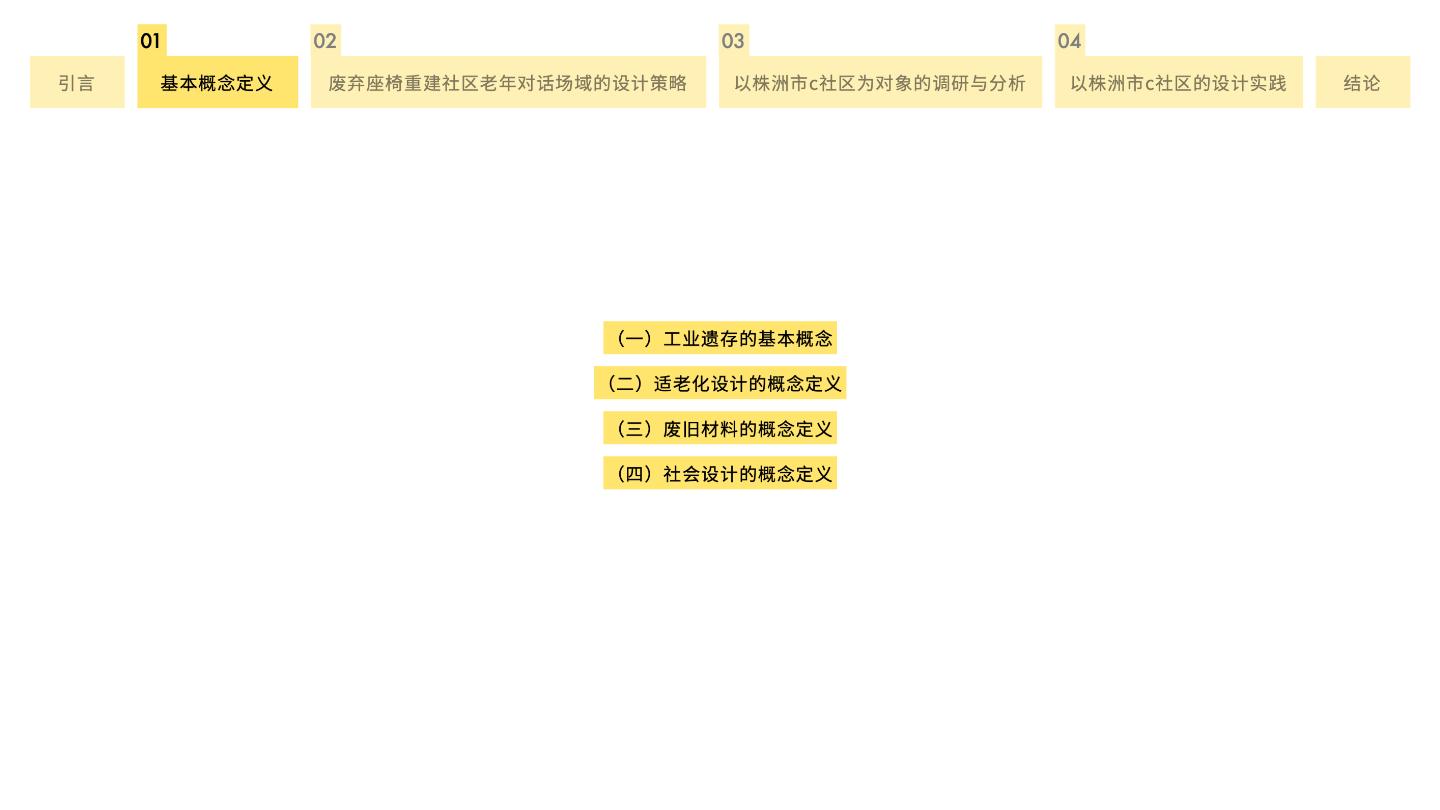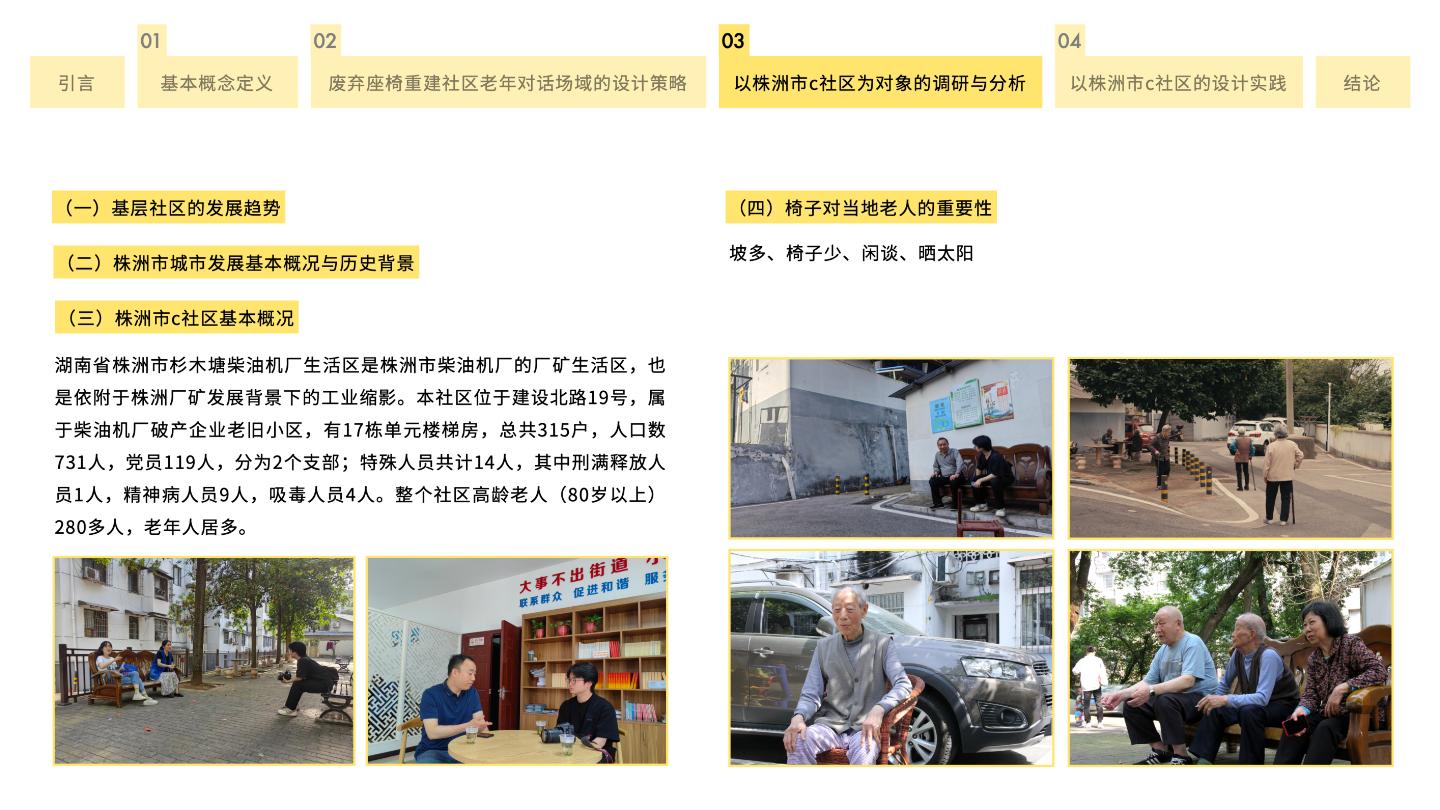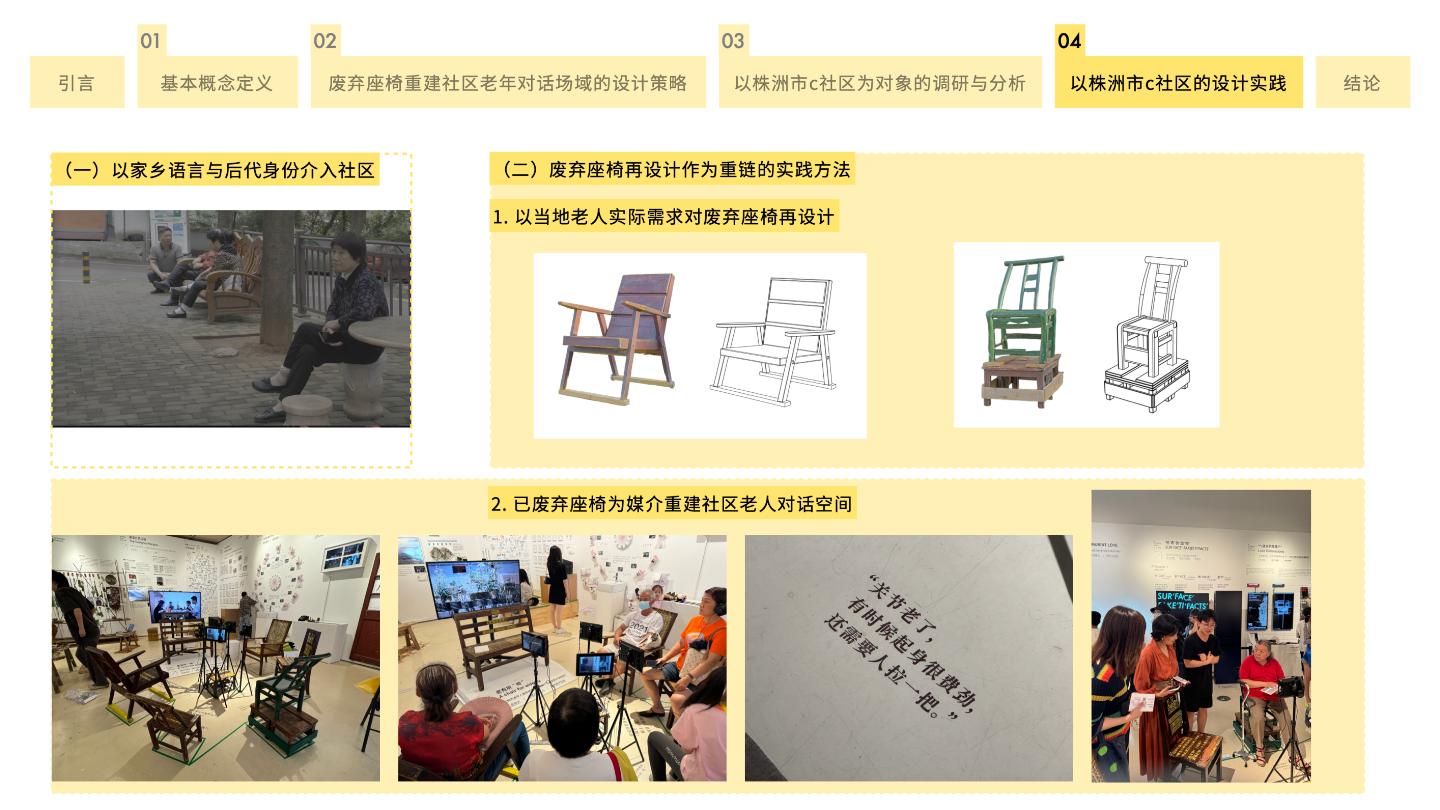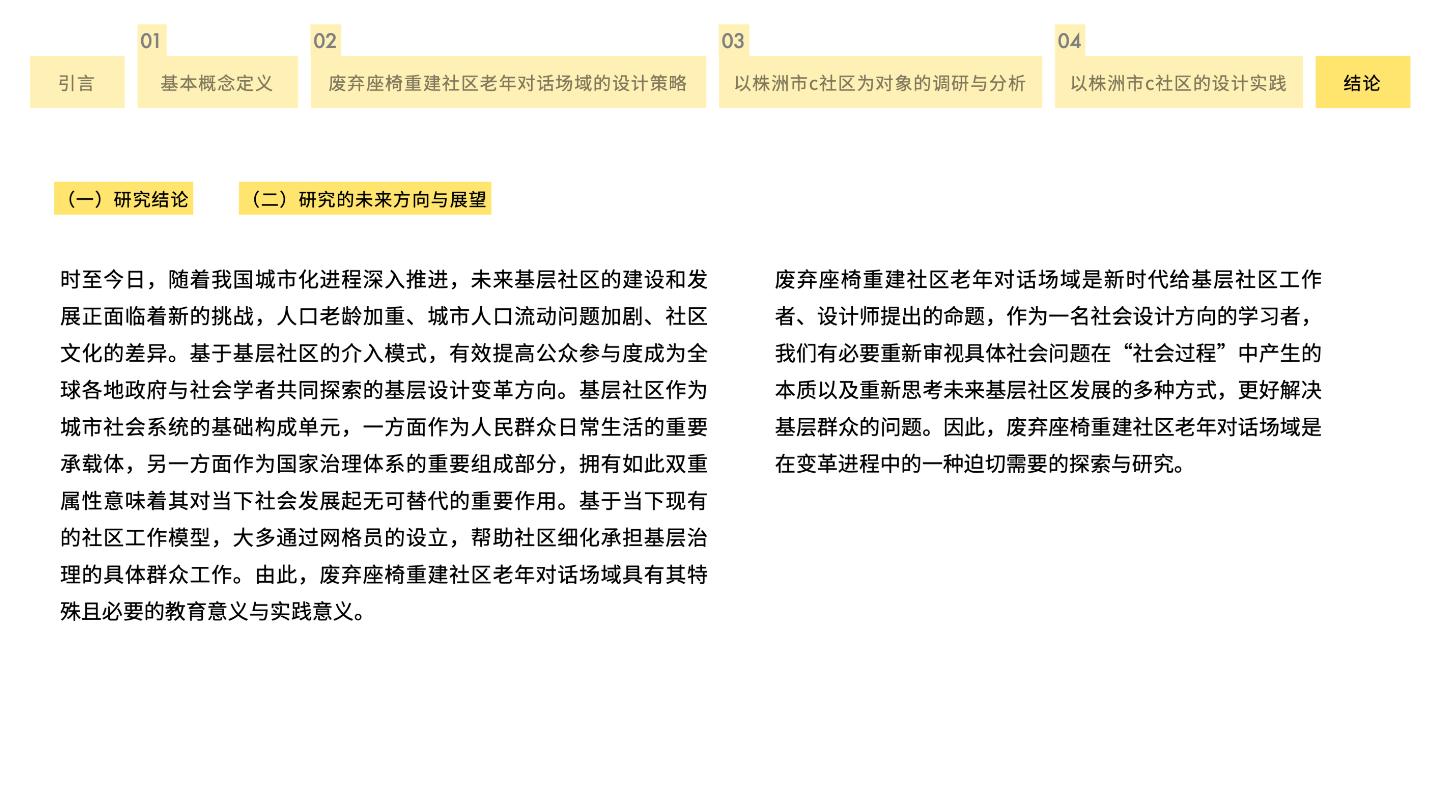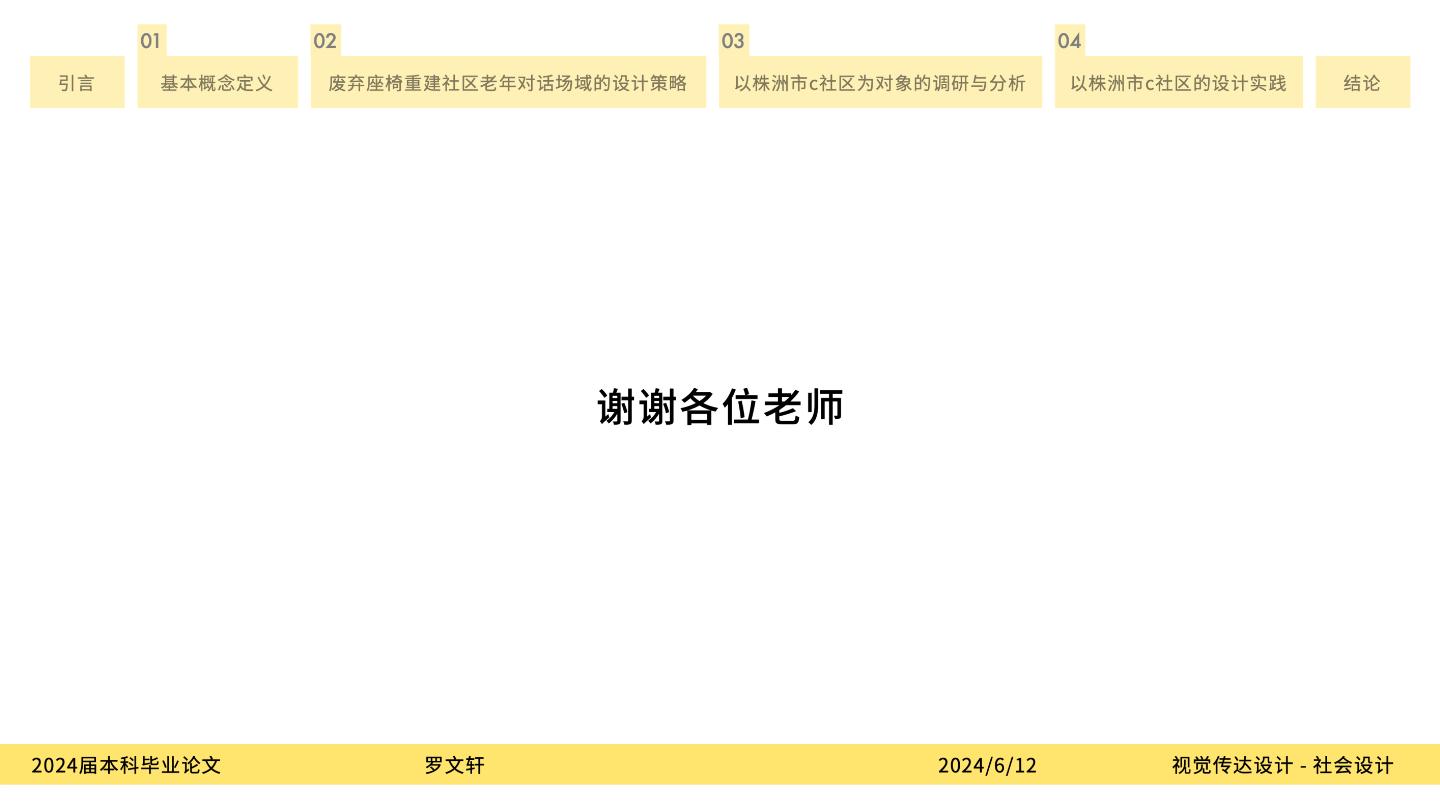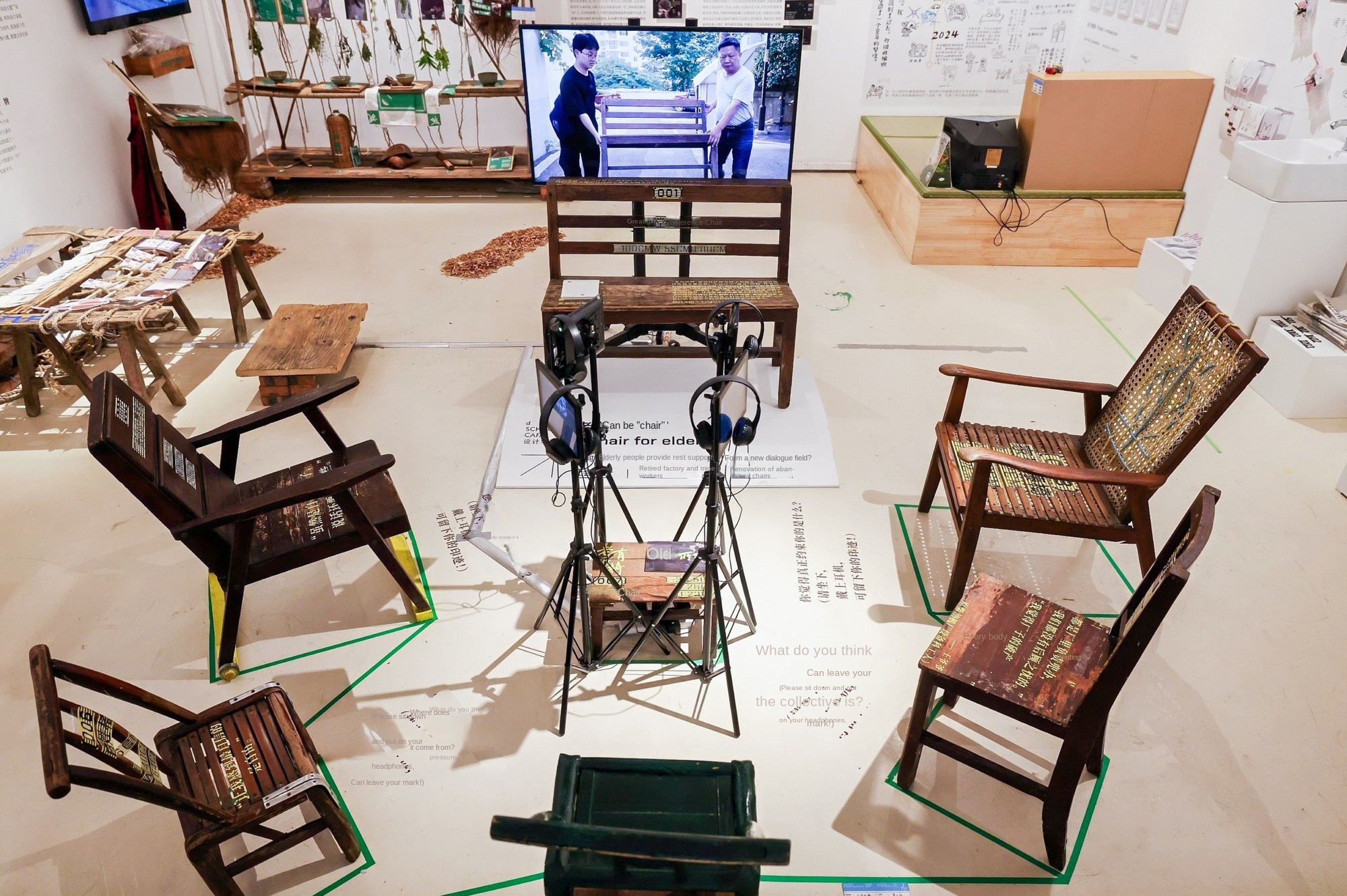
Luo Wenxuan_Old "Chair"_02
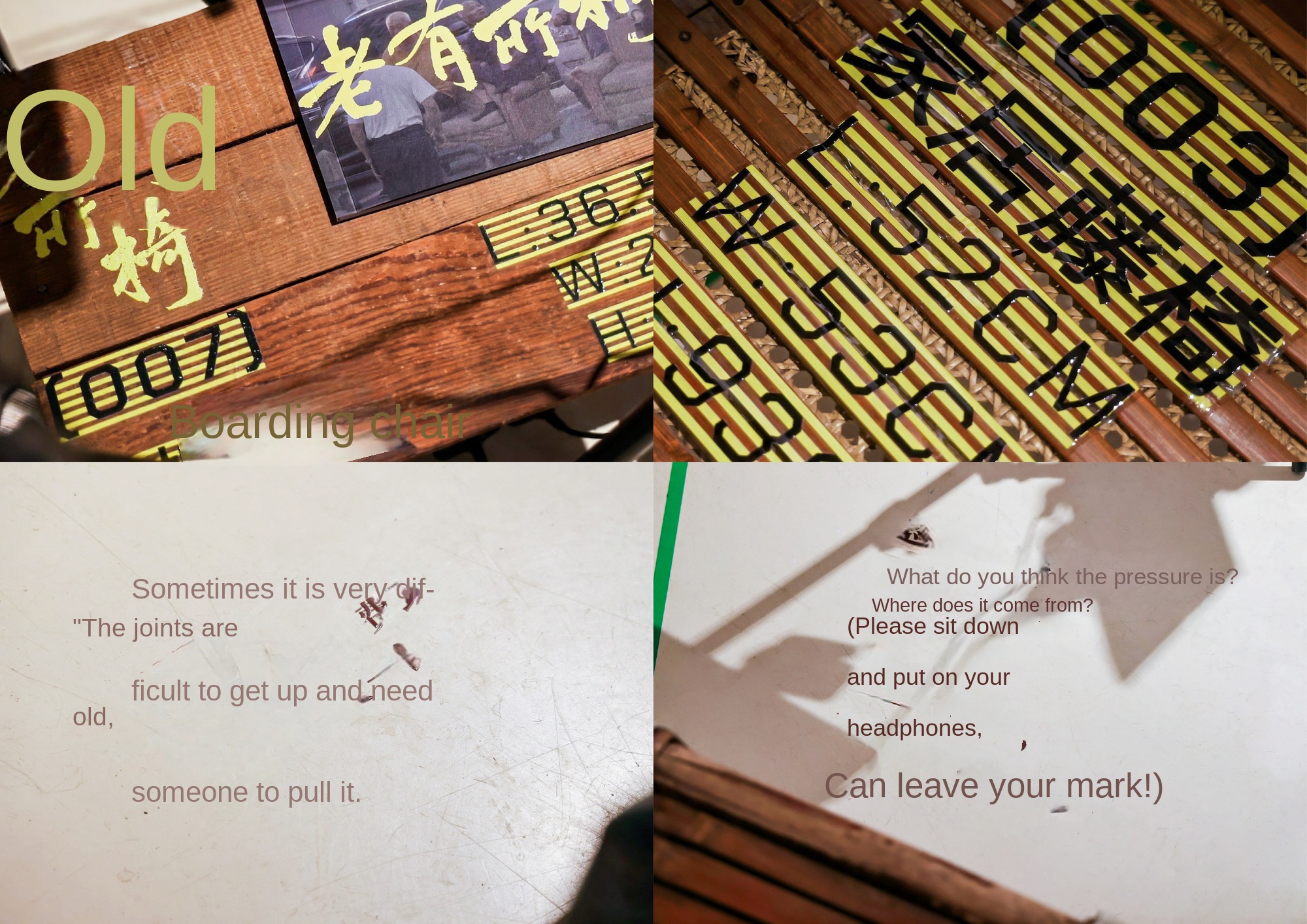
Luo Wenxuan_Old "Chair"_03
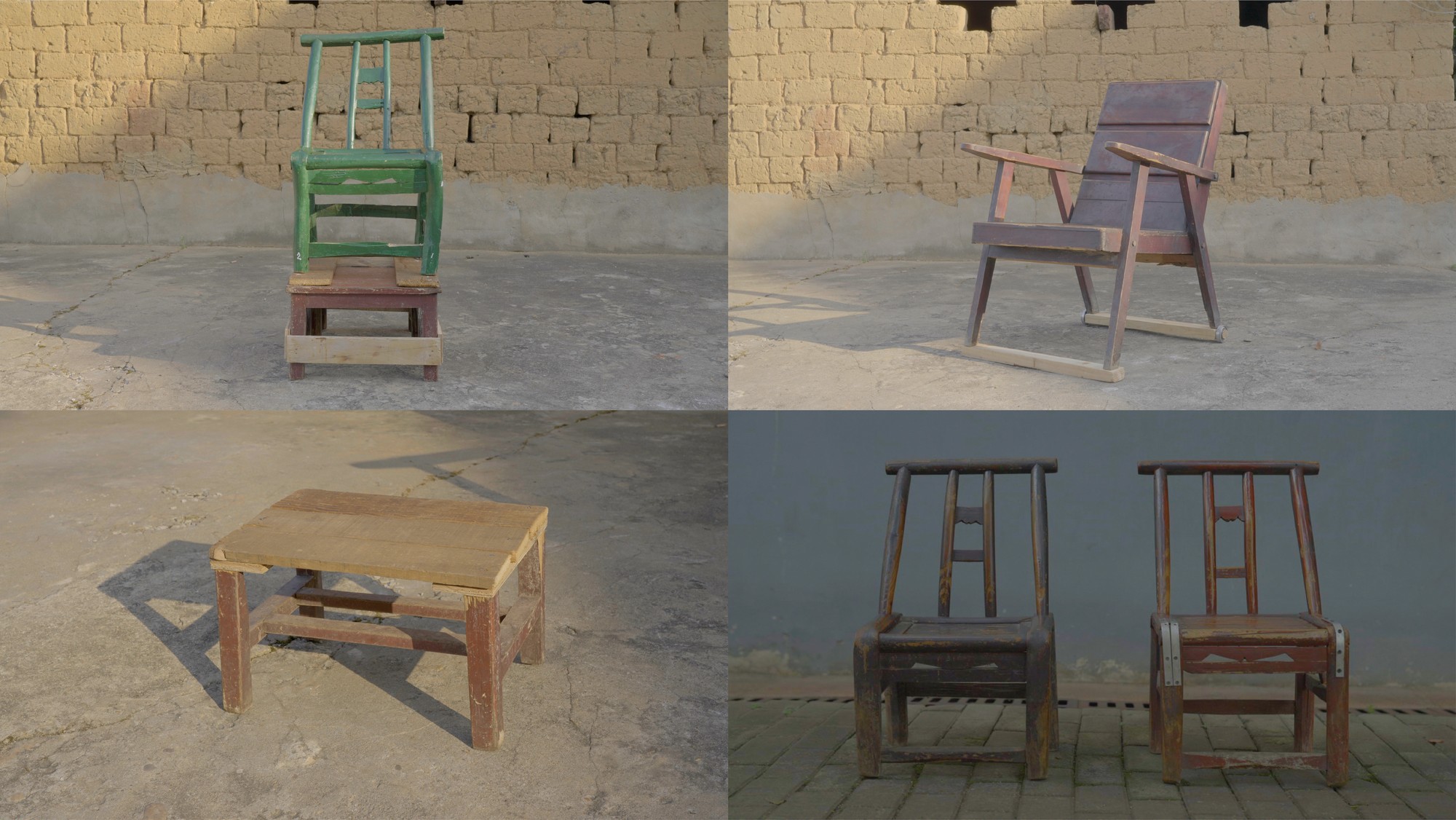
Luo Wenxuan_Old "Chair"_04

Luo Wenxuan_Old "Chair"_05
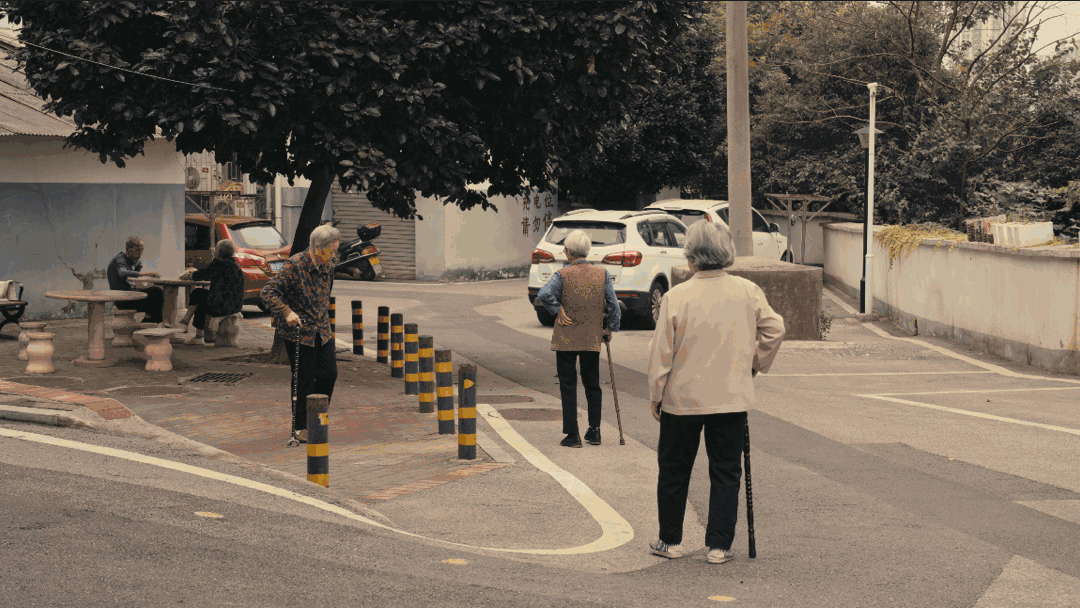
Luo Wenxuan_Old "Chair"_06
Luo Wenxuan-Visual Communication Design
"Old with" Chair "" is a community abandoned chair as a medium, with the design to activate the "abandoned" in the living area of Zhuzhou Diesel Engine Factory. The living area of Zhuzhou Diesel Engine Factory is an old community left over from the industrialization transformation. There is no property management, the community has many and steep slopes, and the elderly account for a large proportion. The project takes the community chair as the starting point. It is an attempt that the materials of art design do not start from industry, but from social materials. This project abandons the highly egotistical, aestheticized presentation of the work and instead takes the self-circulating flow of social relations between objects and objects as the real practical theme. Through such a practice, it may be possible to find that in the production relations of works in contemporary society, there is not only a commercialization road from marketization, but also a return to the pre-modern exchange between things and things, ethics and ethics. Ethical relationship in society. This ethical relationship is based on the emotional memory, survival activities and local characteristics of people in social life. The project is divided into two parts, one of which is to redesign the abandoned chairs by understanding the needs of the local elderly. The second is through the collection of old people's stories, the chair as a medium and as a new dialogue field. It is hoped that through this project, it can help the elderly to get better support on the practical level and help people better understand the elderly at home on the social level. Finally, in the exhibition hall of the Art Museum of the Academy of Fine Arts, when these different chairs were placed together, what appeared seemed to be a scene of an assembly, and it also seemed to be a scene of old people chatting after dinner. It was both daily and public. ceremony.
Using the abandoned chairs in the community as a medium, "A Chair for the Elderly" is a social design practice project to activate the "abandoned" objects in the residential area of Zhuzhou Diesel Engine Factory. The residential area of Zhuzhou Diesel Engine Factory is an old neighborhood left over from industrialization, with no property management, many steep slopes, and a large proportion of elderly people. The project uses community chairs as a starting point and is an attempt to use social materials instead of industrial materials in art and design. This project abandons the highly self-centered and aestheticized presentation of the work and instead takes the self-circulating flow of social relations between objects as the real theme of the practice. Through such a practice, it may be possible to discover that in the production relationship of objects in contemporary society, there is not only a path of commodification from marketization, but also a return to the ethical relationship of pre-modern society, in which objects are exchanged with each other and ethics are exchanged with each other. This ethical relationship is realized on the basis of people's emotional memory, survival activities and local characteristics in social life. The project is divided into two parts: one is to redesign the abandoned chairs by understanding the needs of local elderly people. The second is to collect the stories of the elderly and use the chair as a medium and a new field of dialogue.
Introduction to creative practice:
"Old with chairs" is a social design practice based on the media of abandoned chairs in the community, focusing on the public life of old communities in the context of urban renewal in China. This project selects the living area of Zhuzhou Diesel Engine Factory as the research object. This is a community that has declined due to the transformation of industrialization. It lacks property management. The majority of residents are elderly people, and they are faced with many inconveniences in daily life, such as steep ramps and aging. Infrastructure, etc.
The project uses the redesign of abandoned chairs as a starting point, emphasizing that design is not based on industrial production, but on social materials, focusing on the flow of relationships between people and things, things and things. The practice consists of two main parts: first, based on the actual needs of the elderly, the abandoned chair is functionally transformed to make it more in line with the life scene of the elderly in the community; second, the chair is used as a medium to collect and present the life stories of the elderly, making it a new dialogue field and enhancing the emotional connection of the community.
In the end, these redesigned chairs were brought into the exhibition hall of the Central Academy of Fine Arts Art Museum, showing a scene that is both daily and communal-like a gathering space for the elderly and a community. The scene of residents chatting after dinner. This way of presentation blurs the boundaries between exhibition space and social space, allowing viewers to rethink the way people interact with things, social relations and design practice.
Relevance to Chinese design, society, environment or culture:
1. Design level: I think it is an exploration of social design. Traditional design is often guided by market demand and industrial production, while "old" has a "chair" has jumped out of the commercialization logic, taking design as a means of social practice, emphasizing community co-construction, ethical exchange and public value. Its core concept is in line with the development trend of social design in China in recent years, that is, focusing on the needs of people, the optimization of community space, and the reuse of public goods. 2. Social level: I think it is an aging and community construction. China is entering a deeply aging society. How to improve the quality of life of the elderly in the old community is a social issue that needs to be solved urgently. This project provides practical support for the elderly in the community through the transformation of abandoned chairs, and at the same time uses the chair as a medium to promote intergenerational communication and community emotional connection. This approach responds to the needs of community building in China today, emphasizing how social innovation responds to specific local issues. 3. Environmental level: I think it is a waste reuse. In the process of rapid urbanization, a large number of old furniture and facilities are discarded, and the "old chair" tries to convert these wastes into sustainable resources and give them new life. This move is not only in line with China's current advocacy of sustainable design, but also reflects an ecological ethics, that is, respecting the life cycle of materials and returning "waste" to the cycle of "regeneration. 4. Cultural level: I think it is a reshaping of public space. In traditional Chinese society, neighborhood space is an important social place, while the development of modern cities often weakens this community relationship. This project reactivates the public space through the redesign of the chair, making it a field that carries the memory and emotional communication of the elderly. This kind of reconstruction of social relations based on things is not only a response to the tradition of "bench chat" in Chinese local culture, but also a reflection on the alienation of contemporary urban public life.
To sum up, the practice of "old with" chair "goes beyond the scope of traditional design. It is not only a social intervention, but also a rethinking of the relationship between people and things. Through the transformation of abandoned chairs, it attempts to provide better life support for the elderly in the community at the practical level, promote intergenerational dialogue at the social level, and expand the possibilities of materials and ethics in the field of design. This is not only about the renewal of a community, but also about the relationship between people and communities, people and things, people and memory in the transformation of Chinese society.
Luo Wenxuan, born in Zhuzhou, Hunan in August 2002, is a graduate student in the social design research direction of the School of Design of the Central Academy of Fine Arts. Graduated from the Central Academy of Fine Arts School of Design Visual Communication Design. At present, the creation and research mainly focus on the connection between individuals and groups, groups and society, and related practical problems.







